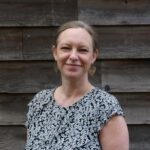Can You Hear Us Now? Using Feedback to Create Community-Centered Services
Getting feedback from those that you serve — and not assuming you know what they need — can help your nonprofit serve your community.


This Article is Certified Gold Avocado
Gold never goes out of style — and neither does good advice. The Gold Avocado series showcases some of the very best content that Blue Avocado has for nonprofit leaders, based on overall popularity, reader response, and quality.
Who knows what a community needs most? The community!
Let’s face it: the nonprofit field has an elephant in the room we’ve been ignoring for too long. We think we know what’s best for our constituents and communities. We think we understand what our communities want and need, believing we have the answers to fix society’s problems. After all, we are nonprofit professionals—of course we have the answers to solve the world’s problems.
But do we really?
To be clear: I am a Gen X, professional, white woman with a mortgage in a bedroom community. Do I know what would be most helpful to low-income renters whose families were redlined for decades and who are themselves at risk of being priced out of Portland’s housing market?
Of course not. That’s not my lived experience. It doesn’t matter how many years I have worked in nonprofits with social and environmental justice missions. And it doesn’t matter how well I educate myself.
So, who knows what they need? They do!
The Importance of Self-Determination
In the field of developmental and intellectual disability service, the concept of self-determination is not new. Many self-advocates fought for years to convince service providers to listen to the voices and community feedback of people with disabilities about what kinds of support they want and need.
Some of the most progressive nonprofits have heeded that call, consulting people with disabilities as they design their programs—in fact, self-determination is in The National Association of Social Workers’ code of ethics. Talk to someone who works on a domestic violence crisis line, and they likely recognize that survivors are the experts in regard to their own safety, not the person answering the phone. But self-determination is not just for social services.

When nonprofit leaders evaluate our efficacy, we need to view our work through the lens of self-determination for those we serve.
While it can be helpful to have a background in social service, all that is really required is a commitment to empower your constituents as well as the humility to admit that you don’t know what’s best. At the community level, self-determination practices translate to community-centered practices.[1]
Portland Housing Crisis: A Case Study
Portland has been in a housing crisis for many years. As a nonprofit that resells salvaged building materials and teaches repair skills, we are well-positioned to help address this crisis by promoting affordable repair for homeowners, landlords, and renters to prevent displacement.
We recognize that there is a great need for housing in our area, so we began talking about our desire to promote repair as a strategy to address the housing crisis, which led to a generous donation from a donor who believes in our vision.
This meant we had money to develop a new home retention program. However, we still didn’t know what specific services to provide to make the most impact. So we asked.
That is, we identified partners to help us connect to the people most impacted by the housing crisis, especially those affected by climate injustice and low-income folks at-risk of displacement. We then surveyed the people these organizations serve while also inviting low-income individuals at risk for housing displacement to participate in focus groups. These surveys and focus groups are now informing what our program will do and how it will do it.
Will the rollout be perfect and smooth? Probably not. Is there a risk that only the loudest voices are informing our decisions? Of course—that’s always a risk. Might we need to course-correct in the future? Undoubtedly. Do all the people we asked have the whole picture of Portland’s housing crisis? Nope.
But would all these risks exist even if we hadn’t engaged in a community-centered process? Yep. At the end of the day, there is little for us to lose—but so much more to gain—from listening to our communities.
Create Community-Centered Practices by Listening to Communities
This sounds great in theory, right? But I know your next question: how does it actually look in practice?
Here are five guiding principles to help you facilitate self-determination in the communities you serve.
1. View the community as the expert.
In my experience, the biggest risk of implementing a community-centered approach is ignoring what the community says. It’s not dissimilar from asking employees what they want and need—if you ask and then ignore the answers, you will breed distrust and disengagement.
The same goes for any constituency. When we ask, we put our reputations on the line. If you aren’t committed to following the lead of your constituents, then taking a community-centered approach will likely damage your credibility and reputation.

One negative social media post about your organization ignoring constituent input could become a major PR crisis.
On the other hand, if you approach community-centered program development with humility and curiosity, you can advance your mission in an effective and sustainable manner. That doesn’t mean that the organization can do everything for everyone. Instead, it means servant leadership.
It means empowering constituents and recognizing that they are the experts of their own lives. It means that the staff may have to learn new ways to work, including a changed power dynamic between the staff and people served.
It’s important to note that you may lose some of your team along the way, especially if they can’t make the leap from being the expert in the room to being the learner. After all, moving towards community self-determination means a departure from the paternalistic and maternalistic foundations that many of our organizations were built upon. It may be difficult for many people to make this adjustment, but the adjustment is crucial nonetheless.
2. Figure out how to access their knowledge.
It’s important to offer a variety of different ways of accessing community knowledge. That is, the more touch points you have with your community, the more opportunity you have for community feedback.
We receive community feedback in a number of different ways. As previously mentioned, we had our partners survey their serviced communities. Survey questions included rating interest in various classes, offering identity-based classes, and scheduling availability (for a sample of our survey—and other—questions, click here).
We then completed a series of focus groups with over 40 low-income individuals at risk of housing displacement. Participants were given the option for in-person or virtual focus groups. As the vast majority chose video, we concluded that offering remote (or hybrid) opportunities for focus groups might be the best way of ensuring greater participation (say, for those with small children or who do not necessarily have reliable means of transportation, for example).
After each class in our education shop, we also survey students about their experience. Students are sent a link to an online survey that asks about the class they just took, whether it met expectations, what they liked best and least, the quality of the instruction, and what sorts of classes they would like us to offer in the future.
In this way, we are getting feedback from at least three different points in our community. This means we have a much more holistic understanding of the community we serve.
(Here are some sample survey questions.)
3. Compensate your community for their knowledge.
First of all, compensation is necessary because we are asking our community to do something on our behalf. We compensate our community because we recognize the sharing of their expertise as work. Of course, being part of the nonprofit sector, I don’t want to say time is money, but if we are going to serve our communities in the most equitable and antiracist way possible, we need to recognize—and compensate—the variety of different kinds of labor.
Secondly, we compensate our community as a form of incentive. Especially these days, we can all use a little bit of help. Simply put, compensation increases the rate of participation. People are more likely to do something if they get something tangible out of it right away. This also helps us get a broader perspective—not just people who enjoy or have the time to take surveys—so we (hopefully) miss fewer voices. We compensate because we want to make this knowledge sharing process worthwhile to a broad swathe of people.
Of course, as a nonprofit, we don’t have unlimited funds. For our focus groups, for example, we found success in offering participants Visa gift cards for their time.
On the other hand, we offer our in-store customers 10% off their next purchase if they complete our annual survey, keeping paper copies of the survey at our cash register as well as a tablet with the online version of the survey they complete right then.
We also posted signs in our store with QR codes that take people to the online survey. Once they’ve completed an online survey on their device (sometimes as they’re shopping), they show the “survey complete” page to the cashier to receive their coupon.

Again, a simple—yet tangible—incentive is often all you need to increase participation and make sure you are hearing from a variety of community members.
Who among us hasn’t completed a survey for a $5 Amazon gift card?
4. Continue the conversation via advisory groups.
While many nonprofits have board members who represent their constituencies, board members are usually recruited for their professional skills and fundraising ability rather than their experience being served by the nonprofit’s mission. An advisory board or committee can help bridge that divide.
An advisory group can help staff identify the gaps between what is needed and what services are currently available and accessible. It can provide context, training, and feedback to the board of directors and staff to keep programs on track.
The advisory board can also serve as a pipeline to board membership in the future. The nonprofit benefits from the advice and lived experience of the advisory group members, and the members benefit from the (hopefully) enhanced or improved services from the nonprofit.
5. Look for solutions within the community.
As aforementioned, Portland—like many other places—is currently undergoing a housing crisis. While external builders might be able to address this, we wanted to look within the community for another approach. We resell salvaged building materials and teach repair skills to our community members in order to promote affordable repair for homeowners, landlords, and renters, not just to keep building materials out of the landfill.
Admittedly, this might not solve the current problem, but we are confident it presents a strategy to prevent further displacement while also teaching valuable skills to our community members.
Of course, such cohesion might not be as evident for the missions of all nonprofits. However, this might be something that you begin to pose to your community in order to get their feedback (and expertise). After all, if social problems are related to one another, perhaps solutions to these problems might be integrated as well.
As an example, one aspect of our new home retention program will be a support group (of sorts). This idea came directly from our community members—not from our staff: many community members expressed enthusiasm for having a cohort to help each other with their home repair projects.
This support group will allow people to share tips and tricks with each other, increasing communal learning about how to complete home repairs and maintenance while also providing opportunities for participants to help each other on projects.
Serve Better and Be Better Served
Centering programs and services on the community being served will help our nonprofits fulfill their missions. We can be more responsive, transparent, and effective when we involve our constituents in our decision-making process.
Admittedly, many of us nonprofit leaders do not necessarily come from the communities in which we serve. As such, we need to make sure we are not merely reproducing the same structural inequalities by removing agency from these communities. Instead, we must listen to them and even seek solutions—or, at the very least, strategies—from our constituents themselves.
As we continue to examine power and privilege in America’s nonprofit sector, this is a natural next step. If we want funders to listen—instead of dictate—to us, we must do the same for our constituents.
We can apply the principles of self-determination to all facets of the nonprofit sector and elevate the voices of those we serve in our conversations. In doing so, we will all be better served.
Sample Survey Questions
Here’s some sample survey questions to get you started.
Sources
[1] For more on community-centered practices, check out We May Be a Motley Crew, But We’ll Adapt to You: 8 Tenets of Holistic Community Engagement for Nonprofits
You might also like:
- Vision Before Strategy: A Nonprofit’s Guide to Defining Success
- Unlocking Potential: Collective Leadership in Nonprofits
- The 3 ‘Rs’ of Equitable Community Engagement
- From Crisis to Clarity: Five Steps to Demystify Succession Planning
- The Expanded Matrix Map: Leveraging Your Triple Bottom Line for Fundraising
You made it to the end! Please share this article!
Let’s help other nonprofit leaders succeed! Consider sharing this article with your friends and colleagues via email or social media.
About the Author
Jennifer Gwinhas more than 20 years of experience as a nonprofit employee, volunteer, and board member. Her nonprofit career has focused on human resources and administration. She has both PHR and SHRM-CP certifications. She currently works as the Director of Administration for The ReBuilding Center, a climate justice nonprofit, and is the Chair of the East Clackamas County Unified Fire Districts Civil Service Commission.
Articles on Blue Avocado do not provide legal representation or legal advice and should not be used as a substitute for advice or legal counsel. Blue Avocado provides space for the nonprofit sector to express new ideas. The opinions and views expressed in this article are solely those of the authors. They do not purport to reflect or imply the opinions or views of Blue Avocado, its publisher, or affiliated organizations. Blue Avocado, its publisher, and affiliated organizations are not liable for website visitors’ use of the content on Blue Avocado nor for visitors’ decisions about using the Blue Avocado website.








This article will be a great staff meeting topic to discuss. Thank you for your perspective.
interesting concept – loved your survey and think you have figured out how to get feedback and interests identified